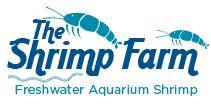Caridina formosae shrimp care & info
Looking for a less common dwarf shrimp to add to your aquarium? You could be among the first in the freshwater shrimp hobby to start a Caridina formosae shrimp breeding project. This species is actually uncommon enough that it doesn't really have a common name yet!
Keep reading for everything you need to know about Caridina formosae care and keeping this species in your home aquarium.
| Scientific name | Caridina formosae |
| Common name | N/A |
| Difficulty level | Easy |
| Origin | Taiwan |
Table of Contents
Caridina formosae appearance
This dwarf shrimp species was first described in a 1993 article following research in Taiwan. The authors note it being slender with a short rostrum and olive to brown or pinkish-red body covered in dark reddish spots. The eyes are also reddish-brown.
The largest specimen they recorded was 17.7 mm in length, or 0.7". This makes Caridina formosae very small, even for a dwarf shrimp!
Setting up a Caridina formosae aquarium
Requirements
You can keep a colony of Caridina formosae in an aquarium from 5 gallons in volume, although going for 10 is a good idea. Larger water volumes make it easier to keep water quality stable.
Like other dwarf shrimp, this one isn't too picky about its environment, as long as you provide plenty of hiding places. Use live plants, shrimp flats, rock, driftwood and other décor items to ensure your formosaes have spots to retreat to when molting.
Water parameters
We haven't been able to find any information about the water parameters in Caridina formosae's natural habitat, but it's likely the species' needs are pretty similar to those of other shrimp from the same regions. The values listed below are based on our experiences with similar species.
As with all shrimp, you should always make sure your aquarium is fully cycled. There should be no traces of ammonia or nitrite present, and nitrates should be kept low by doing weekly small water changes.
pH: 6.5-7.5
Temperature: 65-82 °F
Hardness: 2-8
Total Dissolved Solids: 100-200
Tankmates
Because Caridina formosae isn't all too easy to breed (more about that in the section on breeding), it's probably a good idea to keep this one in an invertebrate-only set-up. You don't want your fish picking off any of the colony and if the shrimp do breed, you want the larvae to have a fighting chance.
Try going for other dwarf shrimp that formosae can't interbreed with, like cherry shrimp. You can also keep various species of aquarium snails safely.
Caridina formosae diet
Like other dwarf shrimp species, Caridina formosae feeds on detritus, biofilm, algae and pretty much whatever else it can find. In the aquarium, you'll see your colony spend much of its days foraging, picking off small bits with their tiny pincers.
You can keep your shrimp well-fed by offering a small amount of high-quality dwarf shrimp food daily. Supplement with everything from blanched veggies to frozen fish food and provide some leaf litter for snacking in-between mealtimes. Be sure to remove any uneaten food after a few hours to prevent it from affecting water quality.
Breeding Caridina formosae
One of the reasons this dwarf shrimp hasn't been commercialized on a large scale like some other Caridina species (Caridina cantonensis, anyone?) is that it's a lower-order species. What this means is that it doesn't hatch as a tiny copy of its parents, but has to pass through a larval stage first.
Lower-order shrimp are more difficult to breed than higher-order ones because their larvae are very fragile. Additionally, some (like Amano shrimp) require a saltwater stage to metamorphose, which makes matters even more complicated.
In the case of Caridina formosae, the good thing is that at least the larvae don't pass through a planktonic stage. A 2001 study examined the larval development and had good success rearing the fry on powdered fish food, so it shouldn't be overly difficult. You just may have to set up a separate larva rearing tank.
Buying Caridina formosae
Although they're still very uncommon in the aquarium hobby, we've seen a few instances of local aquarium stores carrying Caridina formosae. Yours may be able to order some in for you. If that's not the case, you can consider buying on the internet through an online store or from fellow hobbyists.



 Shrimp
Shrimp Fish
Fish Crab &
Crab & Plants
Plants Foods
Foods Snails
Snails